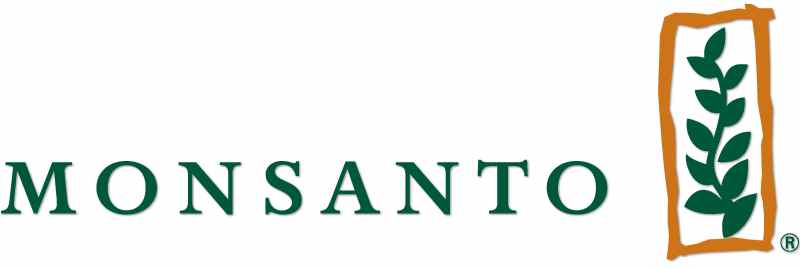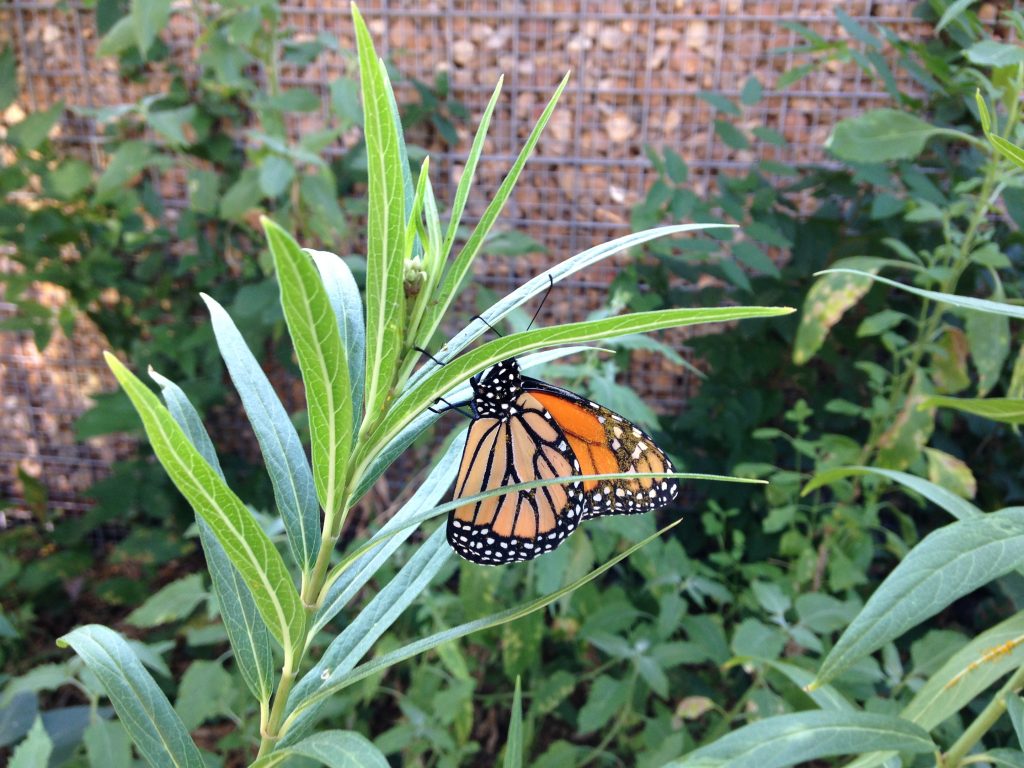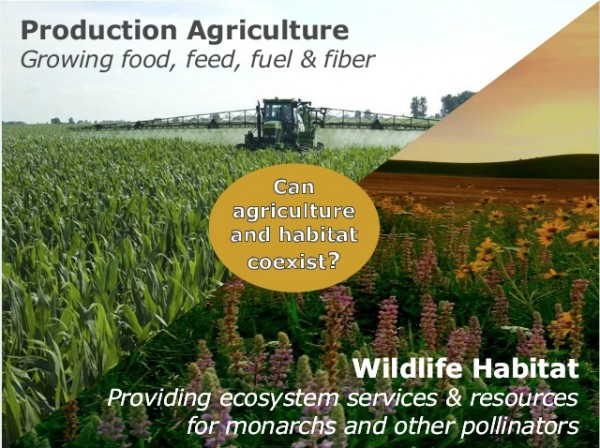Almost a year has passed since Monsanto Corporation stated in its Beyond the Rows blog that it was “eager” to restore Monarch butterfly habitat along the iconic creature’s migratory path.

When it comes to Monarch butterflies, Monsanto is often the villain of choice. But the company says they are committed to helping save the butterflies’ migration.
That blogpost appeared in the wake of an historic meeting of the NAFTA presidents last year, when Presidents Obama and Enrique Peńa Nieto, along with Prime Minister Stephen Harper of Canada gathered 75 miles from the Monarch butterfly’s ancestral roosting sites and committed to form a task force to “ensure the conservation of the Monarch butterfly.”
On February 24, 2014, Monsanto’s blogpost, generically labeled “The Monarch Butterfly” posed the question: What can we do to help?
“We’re talking with scientists about what might be done to help the Monarchs rebound,” the unsigned post stated. “And we’re eager to join efforts to help rebuild Monarch habitat along the migration path by joining with conservationists, agronomists, weed scientists, crop associations and farmers to look at ways to increase milkweed populations on the agricultural landscape.”

Native milkweeds like this Swamp milkweed, Asclepias incarnata, are harder to come by in the Monarch butterfly breeding grounds thanks to GMO corn and soybeans which allow for indiscriminate spraying of herbicides. Photo by Monika Maeckle
In April, First Lady Michelle Obama planted milkweed on the White House grounds, thus creating the first-ever pollinator garden at 1600 Pennsylvania Avenue. Then in August, debate ensued over whether the Department of the Interior should list the Monarch butterflies as “threatened” under the Endangered Species Act.
Monsanto, often vilified for its genetically modified corn and soybean seeds that have wreaked havoc on milkweed all along the insects’ primary breeding grounds from Canada south to Mexico, has remained relatively mum on the subject. They returned to the subject of Monarchs in a September 12, 2014 post headlined, “Helping Protect the Monarch Butterfly.” Here’s an excerpt:
“At Monsanto, we’re committed to doing our part to protect these amazing butterflies. That’s why we are collaborating with experts from universities, nonprofits, and government agencies to help the Monarch by restoring their habitat in Crop Reserve Program land, on-farm buffer strips, roadsides, utility rights-of way and government-owned land.”
So what, exactly, has Monsanto done for Monarch butterflies in the last year?
The Monarch community wondered exactly that this week on listservs, social media and via private emails.
As the news conference announcing the size of the overwintering population at the roosting sites in Mexico was postponed for the third time, efforts to restore milkweed by gardeners was taken to task by mainstream media, and comments on the Federal Register debating the insect’s ESA listing grew to more than 260, postings, conspiracy theories, impatience and indignation abounded.
Dr. Chip Taylor, founder of Monarch Watch, has consulted with Monsanto on the topic. He sent an email Monday to the DPLEX list, which is read by hundreds of butterfly enthusiasts, with the subject line: “Take a deep breath – exhale slowly – relax – please.”
Eric Sachs, the top Science and Policy official for Monsanto, said the multinational corporation is serious about helping Monarchs. While the NYSE-listed chemical and biotech powerhouse has publicly stated it does not support listing the insect under the Endangered Species Act because it wouldn’t “do anything to help solve the problem,” Sachs noted in an email and later by phone that Monsanto has been working diligently with public and private sector partners to “enable greater numbers of farmers to integrate Monarch habitat into existing conservation, land management and habitat expansion efforts.”
A presentation Sachs made in November 2014 to the North American Entomological Society emphasized the company’s penchant for P3s–public-private partnerships. Tools in the conservation arsenal, according to Sachs, include grants, incentives and collaborative projects to increase habitat.

Can habitat and agriculture coexist? Good question. Eric Sachs made this presentation to the North American Entomological Society in November 2014.
Monsanto is prepared to make financial contributions to habitat preservation, Sachs said, but he did not say how much or exactly when, because the company is still trying to gain consensus from the coalition of scientists, conservationists and others tapped via the Keystone Center in Colorado. “Obviously that plan needs to be supported with funds, which will come from Monsanto and other organizations,” said Sachs.
Dr. Taylor seconded the motion in his email to the DPLEX list, encouraging patience and a positive attitude. “It costs $100-1000 per acre to restore milkweed/Monarch habitats, depending on the situation (and maintenance), and we are talking about restoration of a least a million acres a year just to offset annual habitat losses,” Taylor wrote. “Getting the Monarch numbers back to where they need to be will require the restoration of many more millions of acres. The investment will be significant. Partnerships are in the process of forming. Whether significant funding will be forthcoming is still an open question. Please be patient.”
Sachs said Monsanto is being “very deliberate” in developing their plan. “We want to make sure it’s robust, and measure the performance. Then we will essentially fund the program to make sure we get the bang for the buck,” he said.
How it all plays out remains to be seen. “We are absolutely committed,” said Sachs. “At the right time, people will shake their heads and say ‘this is good.’ But we’re not there yet.”
Related posts:
- Endangered Species Act Wrong Tool for the Job of Monarch Butterfly Conservation?
- It Takes a Village to Feed Hungry Monarch Caterpillars
- Desperately Seeking Milkweed: Milkweed Shortage Creates Butterfly Emergency
- Llano River Ready for “Premigration Migration” of Monarch Butterflies
- Pollinator Power on the San Antonio River Walk
- 2014 Monarch Butterfly Migration: Worst Year in History or Hopeful Rebound?
- How to Raise Monarch Butterflies at Home, Part One
- First Lady Michelle Obama Plants First Ever Pollinator Garden at the White House
- Monarch Butterfly Numbers Plummet: will Migration become Extinct?
- NAFTA Leaders, Monsanto: Let’s Save the Monarch Butterfly Migration
Like what you’re reading? Follow butterfly and native plant news at the Texas Butterfly Ranch. Sign up for email delivery, like us on Facebook, or follow us on Twitter, @monikam.


My guess is that Monsanto pesticide products will continue to be sprayed on crops. The current initiative seems to be to increase milkweed habitat in areas other than farmland, i.e., on private, non-cultivated land; along roadsides; and in other areas where there is little or no milkweed. Will it be enough or will it be too little too late?
Planting on roadsides won’t do any good because state road crews spray the road sides.
You might check with your county’s secondary road department about the Roadside Vegetation Program. We are having a lot of success in Linn County, Iowa, as the SRD works hard, trying to establish prairie plantings in the ditches and right of ways. As a result, our country ditches in areas they’ve planted are spectacular! Milkweed, purple cone flowers, asters, goldenrod. I communicate with our SRD fairly regularly.
Maybe I’m just cynical, but I think Monsanto is “absolutely committed” to their public image. Hopefully they’ll prove me wrong.
A key question is: Is it likely that the eastern monarch migration could continue to survive being 60% smaller than it was in the 1990’s due to the widespread adoption of GMO crops? Yes! Consider that western monarch numbers have been holding steady for the past 14 years
http://monarchjointventure.org/news-events/news/western-overwintering-population-2014-15
despite:
– being 200 times smaller than the eastern migration.
– the major increase in the numbers of commercially farmed monarchs released.
– the major increase in the amount of non-native tropical milkweeds planted in home gardens
– 3 consecutive years of severe to exceptional drought in California, and in neighboring States:
http://www.ncdc.noaa.gov/file/september-23-2014-us-drought-monitor-mappng
Completely agree with the comment above: the only things they are committed to are profits and their image. Herbicide is the problem and the area where GMO commodity crops grow almost perfectly overlays monarch habitat. Biodiversity and monoculture crops can’t co-exist. Farmers were able to make big changes when they saw the dust bowl created. Once again the signs are there showing we need to radically change some practices.
What a great piece, Monika. I hope Monsanto comes through. They certainly have been cagey about what they are up to. One question that keeps nagging at me is that folks want the monarch numbers to be back up to “where they need to be.” What number is that and who gets to determine it?
Related to what Tracy has brought up – The historic range of the monarch has really never been fully determined except by one pre-eminent lepidoperist. The ‘spike’ in population twenty years ago may be what we all wish were the norm, but the definition of norm excludes ‘spikes’. The lepidoperterist Vane-Wright claims that it was the mast deforestation that allowed the monarch to expand into its current range:
Vane-Wright, Richard I. The Columbus Hypothesis:… An Explanation for Dramatic 19th Century Range Expansion of the Monarch Butterfly Stephen B. Malcom and Zalucki, Myron P., Eds 1993 Biology and Conservation of the Monarch Butterfly From,. the 2nd International Conference on the Monarch Butterfly Natural History Museum of Los Angeles County. Los Angeles, CA.Pp.183-185.
Barb, that is very interesting about the historic range . The timeframe of data collected for the overwintering numbers is really such a small snapshot, I’ve wondered what the numbers were during the dust bowl years. Recently read in the petition about the deforestation (assume converting land to agriculture) may have increased the numbers of Monarchs. Makes me wondered just how long the migration has been accuring
Whatever the historical range may have been the area where they currently fly is prediminately planted with GMO crops (corn, soy and cotton) using herbicides and pesticides. How many monarchs do we want? We could start by hoping for a stable population rather than one that looks like it is crashing.
The population does look like it is crashing, but we have to admit that it is also quite cyclic, which gives me some hope. The California population trends have been cyclic, also. In the 1950s Fred Urquhart documented the cyclic nature of his population observations expressing his concern when he saw no butterflies. So my assumption, which probably does not jive well with those who have been worried about monarch extinction, is that populations will continue to be cyclic.
Without exceptional weather events monarchs overwintering will continue to increase. Existing milkweed throughout Texas will continue to recover from th devastating drought particularly 2011
Remember, it’s about the weed.
Same plants, more leaves, more larvae, more butterflie,s more snow- butterflies 😉
I believe the degree of predation of monarch eggs and caterpillars in the summer breeding grounds is a key factor that determines the size of the fall migration. Cold winters in the northern States like this winter and last winter appear to reduce predator populations. So monarch populations should build nicely this coming summer in the northern States and the fall migration should be larger than 2014 was. The winter of 2011-12 was warm so predator populations were larger than normal during the spring and summer of 2012 which caused the monarch population to crash in July-Aug of 2012.
I like your bug theory Paul ! Most monarchs are related to Texans. I guess there are monarchs who venture north and natural selection will weed out the stupid ones 😉
So, If you’re right and I’m right what’s your overwintering number this year Paul